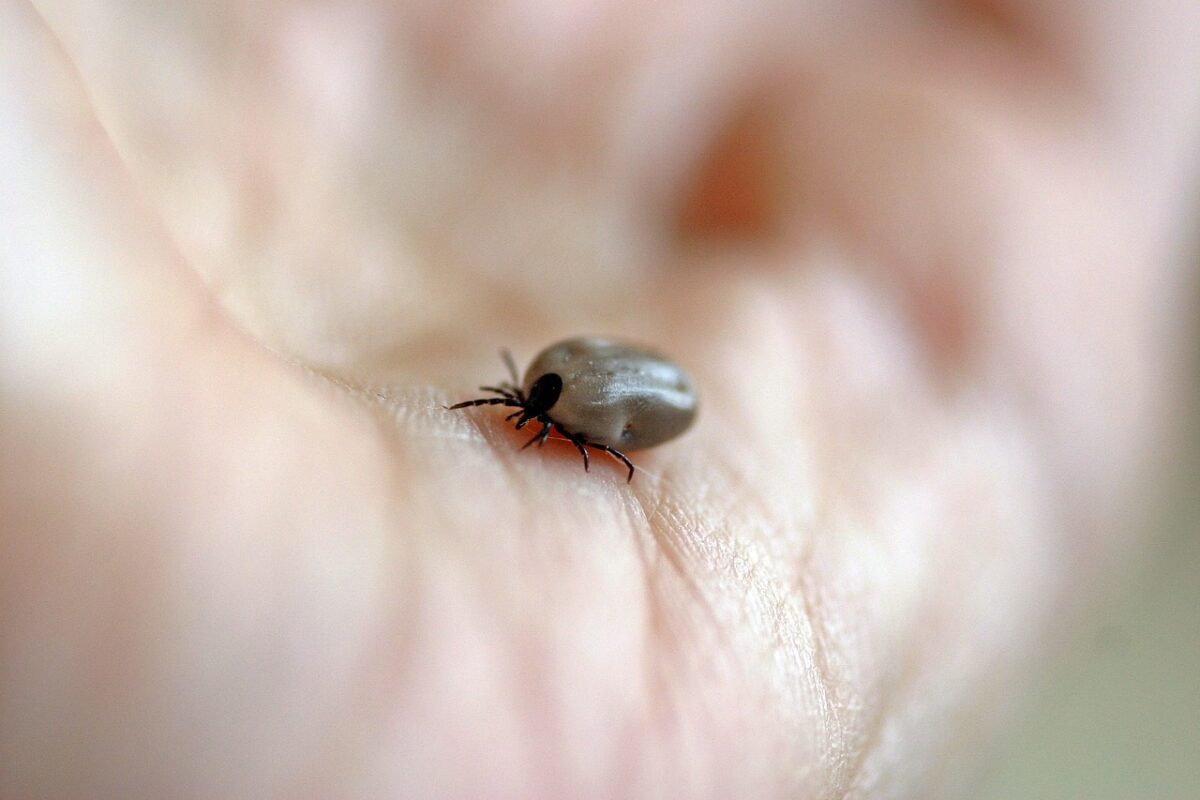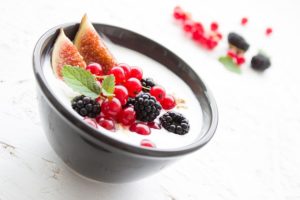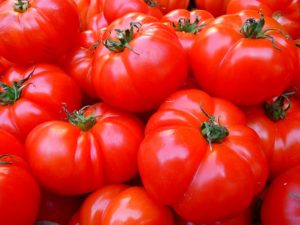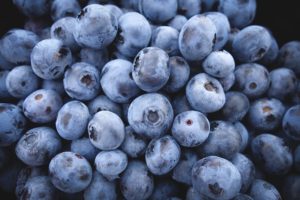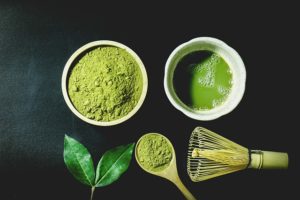Summer is always a great time to enjoy the great outdoors and soak up some vitamin D. However, it is all too easy to get too much sun exposure which leads to the painful effects of sunburn. Sunburn is not only painful but it can lead to skin damage and, in the long run, increase your risk of skin cancer.
if you’re one of the many who’ve been lounging outside without sunscreen, or maybe you were negligent with reapplication, you’re probably feeling the burn! Luckily, there are natural ways to moisturize and nourish the skin after sunburn. But before we get to those natural remedies it is important to know what the first steps should be after a sunburn.
So let’s review sunburn first aid:
-
Move Out of the Sun: As soon as you notice signs of sunburn, such as redness or pain, move to a shaded area or indoors immediately to prevent further skin damage.
-
Cool Down Your Skin: Apply cold compresses to the sunburned area or take a cool (not cold) bath or shower to help soothe the skin and reduce inflammation.
-
Hydrate: Drink plenty of water to prevent dehydration, which can occur after excessive sun exposure and can worsen your sunburn symptoms.
-
Moisturize: Apply a moisturizing lotion or aloe vera gel to the affected area. This can help soothe the skin and prevent it from drying out and peeling.
-
Avoid Further Sun Exposure: Stay out of the sun until your sunburn heals to prevent further damage. If you have to be outdoors, wear protective clothing and use a broad-spectrum sunscreen with an SPF of at least 30.
Now let’s review some natural moisturizers and topical treatments to help protect and repair the skin after sunburn:
1. Aloe Vera: Aloe vera is one of the most effective natural treatments for sunburn. Aloe vera has been used for centuries as a medicinal plant because it contains powerful compounds that work to reduce inflammation, stimulate skin growth, and has a cooling effect on the skin. Slice open an aloe vera leaf and apply the gel directly to your sunburned skin. Do this several times per day, and you should see a reduction in redness and pain in no time.
2. Oatmeal Bath: An oatmeal bath is another effective way to soothe sunburn. The anti-inflammatory properties of oatmeal combined with cool water can help to reduce redness and inflammation, which will make you feel better fast. Simply grind up some oats in a blender or food processor to create a fine powder. Add the oatmeal powder to a cool bath and soak in it for at least 20 minutes.
3. Green Tea: Green tea is packed with antioxidants that can help to repair sun-damaged skin. When you apply chilled green tea bags to your sunburned skin, the catechins found in the tea work to reduce skin inflammation and soothe the pain. Soak several green tea bags in cool water, and then apply them directly to the affected areas of your skin.
4. Shea Butter: The moisturizing qualities of shea butter can replenish the hydration lost in your skin due to sun exposure and help prevent peeling that often accompanies sunburn healing. Furthermore, shea butter contains fatty acids and plant sterols, such as oleic, palmitic, stearic, and linolenic acids. These oils are absorbed by the skin and used to reduce inflammation and soothe the skin. Shea butter is also rich in Vitamins A and E, which are known for their ability to repair damaged skin and improve skin conditions. In particular, Vitamin E is an antioxidant that can help neutralize free radical damage caused by sun exposure. Additionally, shea butter has reported healing properties that can be beneficial for repairing skin damage caused by sunburn
5. Coconut Oil: Coconut oil is a natural remedy for sunburn that can be used to moisturize the skin after it has been exposed to the sun. Coconut oil is full of natural antioxidants that help to protect the skin and prevent damage from UV rays. Apply it liberally after a shower to moisturize and soothe sunburnt skin.
Sunburn is painful but luckily, there are natural remedies that can help alleviate the pain. Aloe vera, oatmeal, green tea, apple cider vinegar, and coconut oil are all great natural ways to ease the symptoms of sunburn. But remember, prevention is better than cure. Avoid sunburn by using sunscreen, seeking shade during peak hours of sun, and covering up with hats and clothing. Keep safe this summer and enjoy the outdoors!
Almost every outdoor enthusiast has faced a tick bite once in their lifetime. These tiny creatures might seem insignificant, but they can cause provoking health issues. Lyme disease is one among them that are caused by tick bites. Therefore, it’s essential to know what to do if you find a tick on your skin.
Here’s your ultimate guide on tick removal and prevention of Lyme disease.
Step 1: Remove The Tick
Tick removal is the first step towards your prevention of Lyme disease. To remove the tick safely, you need to have essential tools, such as fine-tipped tweezers or a tick removal tool.
Now, use these tools to grasp the tick as close to the skin’s surface as possible. Pull the tick upward with steady, even, and controlled pressure. Try not to twist the tick or jerk it, as this can cause mouth parts to remain in the skin. If the mouth part remains, use tweezers to remove it.
After removing the tick, clean the area with rubbing alcohol or soap and water.
Step 2: Save The Tick
It might sound strange, but saving the tick can help you to test for diseases and know better about the treatment. So, always save the tick in a clean plastic bag or a small container with a lid. Write the date when you were bitten and where the tick most likely bit you on the container so you don’t forget later.
Step 3: Monitor Your Symptoms
After tick removal, it’s important to monitor symptoms and seek medical attention if necessary. Lyme disease can present with nonspecific symptoms like fever, headache, muscle aches, fatigue, and a circular, reddish skin rash. Symptoms of some other tick-borne diseases may not show up for weeks or months.
If symptoms appear, seek medical attention immediately. Remember to tell your healthcare provider that you have been bitten by a tick and when and where the bite occurred. The more details you can provide, the easier it is for your doctor to determine if you need further testing or treatment.
Step 4: Prevention Of Lyme Disease
The best way to prevent Lyme disease is to avoid being bitten by ticks. Wear light-colored clothing, so it’s easier to spot a tick on you. Tuck your pants into socks and your shirt into your pants, so ticks can’t easily access your skin. Use insect repellent when outdoors in areas where ticks are more likely to reside (wooded areas and tall grass).
DEET is an effective insect repellent however there are some potential hazards with excessive use such as: Skin irritation, allergic reaction, eye irritation, and neurological effects. Here is a list of DEET free insect repellents that work against ticks:
-
Lemon Eucalyptus Oil: A natural repellent derived from the lemon eucalyptus tree, it is effective against mosquitoes and ticks.
-
Picaridin: A synthetic repellent that resembles the natural compound piperine found in black pepper plants, it is effective against various insects and ticks.
-
Geraniol: A natural alcohol found in many essential oils like geranium, citronella, and lemongrass, it repels mosquitoes, ticks, and other insects.
-
Neem Oil: Extracted from the neem tree, it provides protection against various insects, including mosquitoes, but may be less effective against ticks.
-
Cedarwood Oil: An essential oil derived from cedar trees, it is effective against mosquitoes, ticks, and other insects.
After coming inside from areas where ticks may be present (like grassy fields or wooded areas), take a shower to wash off any unattached ticks or use a lint roller on your clothing.
Step 5: Check Yourself And Your Pets For Ticks
Always check yourself, your kids, and your pets after being outside, especially in grassy and wooded areas. Pay special attention to hard-to-see spots like scalp, armpits, groin, and behind knees. Use a mirror for those hard-to-see areas, or ask a loved one to help.
Conclusion:
Tick bites can seem like a minor concern, but they can cause major health issues, such as Lyme disease. Knowing the right steps to take when bitten is essential to prevent long-term consequences. Remember to remove the tick correctly with tweezers, seek medical attention if necessary, and prevent tick bites by using insect repellent, checking for ticks, and practicing caution in tick-infested areas. Stay safe and enjoy the great outdoors!
Do you give your kids probiotics?
Every year it seems like the back to school commercials start to pop up earlier and
earlier in the summer months. Although these commercials are aimed at bringing
parents into office supply and clothing stores in prep for their kids returning to
school, as parents we can also use this time to implement nutritional strategies to
help our kids excel during the school year.
Besides the obvious beneficial lifestyle approaches like eating a balanced nutrient
rich diet and daily exercise, there are a few specific recommendations that may help
your kids have the edge when it comes to starting school.
[banner ]Probiotics[/banner]
Probiotics are live bacteria cultures that seem to have varying health benefits when
introduced into our gastrointestinal tract. Probiotics are naturally found in many
fermented foods such as yogurt, kefir, miso, tempeh, sauerkraut and kombucha. It is
believed that as a species, fermented foods played a larger role in our diet as we
evolved and our bodies have grown to rely on these bacterial cultures for optimal
health and wellbeing. Our modern “western” diet has been relatively low in these
fermented foods and there have been hypothesis relating many chronic diseases of
the gastrointestinal tract and immune system back to imbalanced gut bacteria.
Subsequently we have witnessed a surge in probiotics being offered in supplemental
form as a way to help restore this balance. It is important that I stress the fact that
probiotics alone are not the complete picture with regard to a healthy
gastrointestinal and immune system but research has suggested that they do play a
part.
Probiotics help boost the immune system – with kids heading back indoors and
spending large amounts of time in classrooms with each other (including daycare),
there is a dramatic increase in germ exposure and potential for kids to fall prey to
illness. In one study, 326 children aged 3-5 years were randomly assigned to
receive, in double-blind fashion, probiotic supplementation. Treatments were given
twice per day in divided doses for 6 months, including the winter season. Compared
with placebo, the probiotic group had the following results; fever reduction 53-73%,
cough reduction 41-62%, decreased runny nose 28-59%, decreased need for
antibiotics 68-82%, reduced absence from school 28-32%.
Probiotics help with allergies – Heading back indoors can trigger many kids who
are especially allergic to dusts and molds. With regard to asthmatic children with
allergic rhinitis, studies have shown the use of probiotics resulted in a significant
reduction in the inflammatory immune chemistry produced by peripheral blood
mononuclear cells. Further studies have shown specific down-regulation of T cells
(immune cells), which beneficially alter the balance of pollen specific antibodies in
seasonal allergic rhinitis. In short – probiotics lower the allergic load and decrease
inflammation.
Probiotics help with mood – Recent research is showing new gut-brain
connections as happy gut ecology seems to make for happier brains. In one
particular study, anxious mice dosed with probiotics showed lower levels of anxiety,
decreased stress hormones, and even increased brain receptors for
neurotransmitters vital in curbing worry, anxiety and fear. With better mood comes
greater ease and ability to learn in school settings and beyond.
Stay tuned for part 2 which will focus on cold/flu prevention and treatment.
Book a consultation with our Naturopathic Doctor Shawn Meirovici for
more information on child-friendly probiotic strains and dosages.
[button size=”btn-large” link=”https://doctorshawn.ca/contact-us/” target=”_blank” ]Book Now[/button]
Leyer, GJ et al. Probiotic effects on cold and influenza-like symptom incidence
and duration in children. Pediatrics 2009; 124-179.
Walker, WA. Mechanisms of action of probiotics. Clin Infect Dis. 2008; 46 (Suppl
2): S87-91.
Yang, G et al. Treatment of Allergic Rhinitis with Probiotics: An alternative
approach. N Am J Med Sci. Aug 2013; 5 (8): 465-68.
Javier, AB, Forsytthe, P & Cryan, J. Ingestion of Lactobacillus strain regulates
emotional behavior and central GABA receptor expression in mice via the vagus
nerve. Proc Natl Acad Sci USA. Sep 20, 2011; 108(38): 16050-55.
It’s the summer of 2018 and it’s a hot one. Having fun in the sun is what we dream about all winter long and while we do benefit from some sun exposure (boosting levels of vitamin D and serotonin) we must also balance sun exposure with sun protection. In this article I will outline some general guidelines with reference to safe sun exposure, getting enough vitamin D and how consuming certain foods may help further protect us during recommended exposure times.
Exposure
According to recent research we now know that vitamin D is not only important for strong healthy bones but also plays a role in preventing some chronic diseases like Multiple Sclerosis and Cancer. So we need to know some general guidelines for getting the right amount of sun exposure while helping protect ourselves from damaging UV radiation.
In 2001 the Australian Radiation Protection and Nuclear Safety Agency set out to determine daily UV radiation levels in major cities across Australia. How much sun was needed to produce adequate levels of vitamin D and how much exposure could produce damage to the skin was investigated. The general guidelines to come out of the report were as follows: In the peak of the summer, July and August in North America, “2 to 14 minutes of sun three to four times per week at midday will give fair-skinned people with 15 per cent of the body exposed the recommended amount of Vitamin D. However, redness (skin damage) can occur in only eight minutes in these conditions.
So in peak summer times from 10 am to 3pm, you should use protection against the sun; shade, hats, clothing, sunglasses and sunscreen.
But earlier in the day and later in the afternoon, for a similar period of sun exposure and vitamin D manufacture, you get much less skin damage.”(http://www.abc.net.au/health/thepulse/stories/2006/04/05/1609208.htm)
For the months just before and after the peak summer months (June and September) the study revealed that the time of sun exposure needed for adequate vitamin D levels increases to 10 to 15 minutes 3-4 times per week. In the fall, winter and early spring months we need short periods of exposure during peak times of the day 10am-3pm in order to make enough vitamin D.
Sun-Blocking Foods
The question then becomes; in those times of recommended sun exposure how do we further protect ourselves from the damage of UV radiation? Part of the answer may be in the food we eat and beverages we drink. UV radiation helps us to make important compounds such as vitamin D but it can also cause damage to our cells. Cellular damage occurs via the production of inflammation and damaging compounds called free radicals. Some important compounds in our diet that combat inflammation and free radicals are: Omega-3 fatty acids and Antioxidants.
Antioxidants are compounds found in fruits and vegetables that serve to protect the plant against the harmful effects of its environment, including UV radiation. Many of these antioxidants incur the vibrant colors we associate with fruits and vegetables onto them.
Lycopene is a powerful antioxidant found in red colored fruits and vegetables such as: Tomatoes, Watermelon, Guava, Grapefruit, Papaya and Red Peppers including Chili Pepper. Lycopene is most easily absorbed when it has been cooked, making tomato paste and cooked tomatoes an excellent source of bio-available lycopene. Not only does this antioxidant protect the fruit/vegetable from UV damage, when we consume lycopene, it protects our body as well.
Anthocyanidins are a group of antioxidants that incur free radical protection and have a dark red or purplish color. Rich sources of anthocyanidins include: Blueberries, Acai, Pomegranate, Blackberries and Cherries.
The flavonoid antioxidants in green tea include the very powerful polyphenol EGCG. EGCG has not only been shown to inhibit tumor cells in some cancers but has also been shown to protect cells from the aging effects of UV radiation. Particularly matcha green tea (pulverized powdered tea leaves) can be 137 percent higher in EGCG than regular water infused tea leaf. Dark chocolate is also very high in phenols and can incur a 25 percent increase in sun tolerance at 2 ounces of over 70% cacao per day.
Another compound important for protecting our body against the potentially harmful effects of sun exposure are omega-3 fatty acids. These fatty acids help to drive an anti-inflammatory pathway in the body. Radiation and chronic disease induces inflammation which can lead to cellular damage and premature aging. Fish is an excellent source of omega-3 fatty acids, particularly Salmon, Herring, Mackerel, Trout and Sardines. It is recommended to eat at least 2 servings of high omega-3 fish per week or to take a fish oil supplement daily.
Another good source of omega-3 fatty acids are flaxseeds. Flaxseeds also contain compounds called lignans which may protect against the development of some cancers. It is recommended to have a half teaspoon of ground flaxseeds per day or a flaxseed oil supplement.
Although these are all specific examples of foods rich in sun protecting compounds, a good general rule of thumb is too eat plenty of vibrantly colored fruits and vegetables which will undoubtedly be rich in antioxidants. It is also just as important to limit foods which can cause free radical damage and inflammation, these include: sugar and red meats.
Equip your body with sun protecting foods and follow the guidelines as to when to allow for uninhibited sun exposure. By doing so you will make the D and be problem free.
[button size=”btn-small” link=”https://doctorshawn.ca/contact-us/” target=”_blank” ]Book Now[/button]



